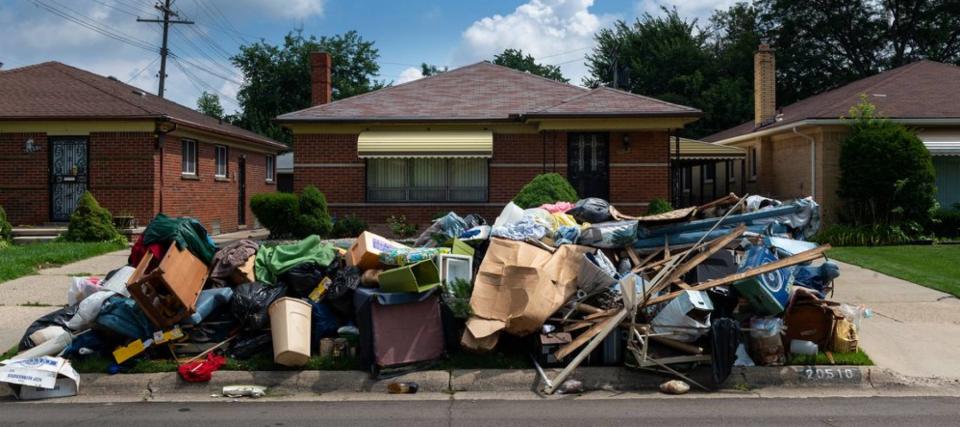Census Bureau: 3.8 million renters will likely be evicted in the next two months — why the rental crisis keeps getting worse

For the first time ever, the median rent in the U.S. topped $2,000 a month in June — and the increases show no sign of stopping.
Those rising rents mean that households representing a total of 8.5 million people were behind on their rent at the end of August, according to Census Bureau figures. And 3.8 million of those renters say they’re somewhat or very likely to be evicted in the next two months.
The combination of soaring inflation, the end of most eviction moratoriums and rental assistance payments and an extremely low vacancy rate has pushed rents up — and many renters out.
Don’t miss
Mitt Romney says a billionaire tax will trigger demand for these two physical assets — get in now before the super-rich swarm
You could be the landlord of Walmart, Whole Foods and Kroger (and collect fat grocery store-anchored income on a quarterly basis)
Here are 3 proven ways to get really rich during a recession — without having to risk a bunch of money to do it
Rents up nearly 25% since before the pandemic
Since 2006, rents have risen faster than home prices, but at the same time, the shortage of available rental units has been steadily increasing since the Great Recession.
In the year before the pandemic, the country recorded a shortage of seven million affordable housing units for low-income renters, according to the Center for American Progress, creating a crisis that left just 37 affordable rental homes for every 100 low-income households looking to rent.
And the homes that are available are often still out of reach. Rent rates are up nearly 25% since before the pandemic, with an increase of 15% in just the past 12 months, according to the real estate tracking service Zillow.
Evictions are up, too, according to the Eviction Lab at Princeton University. In August, evictions were 52% above average in Tampa, 90% above average in Houston and 94% above average in Minneapolis-St. Paul.
While the federal government has distributed the bulk of pandemic-related rental assistance grants, some states and cities have been slow to make the money available to landlords on behalf of tenants who can’t pay their rent.
As of May, the National Low Income Housing Coalition reported that 12 states and the District of Columbia had distributed half of their last assistance allocation, while Idaho, Iowa and Ohio hadn’t spent any of that money. Two states — Nebraska and Arkansas — refused to accept the federal rent assistance money.
Nearly half of renters have seen rent hikes
The annual median household income for all renters in the U.S. is about $42,500, according to Zillow, 37% lower than the national median income of $67,500.
As of early August, the Census Bureau reported that while 56% of renters had household incomes of less than $50,000, 24% of renters surveyed were paying more than $2,000 a month in rent.
Nearly half of all renters — more than 30 million people — had been hit with rent hikes in the past 12 months, with 19% paying a monthly increase of $100 to $250, 7% paying $250 to $500 more and 4% needing to find another $500 a month to stay in their apartments.
To meet higher rents, 57% of renters said they relied on credit cards, loans, savings or selling off some assets, including raiding their retirement accounts.
Despite that, 14% of renters told the survey that they weren’t completely caught up on back rent.
Rising rents hurting some more than others
Rising rents are hitting minorities harder than others, according to a Pew Research Center analysis of census data.
Among households headed by Black adults, 58% are renters, while 52% of those headed by Latino adults rented. That compares to a rental rate of slightly less than 40% of Asian-led households and 25% for households led by non-Hispanic white adults.
While inflation gets the blame for much of the problem with high rents, the cure for high inflation also may be contributing to the tight rental market, as renters who wanted to become homeowners are increasingly being priced out of the housing market.
As the Federal Reserve has increased interest rates to cool off the economy and bring down inflation, that move has pushed U.S. mortgage rates up from less than 3% a year ago to 5.13% by mid-August.
The combination of higher home loan rates and already high home prices has resulted in an 18% drop in mortgage applications from August 2021 to a 22-year low.
What to read next
Sign up for our MoneyWise investing newsletter to receive a steady flow of actionable ideas from Wall Street's top firms.
'Imagine you are laid off’: Suze Orman's tough-love tips to prepare for the recession ahead
Warren Buffett likes these 2 investment opportunities outside of the stock market
This article provides information only and should not be construed as advice. It is provided without warranty of any kind.
